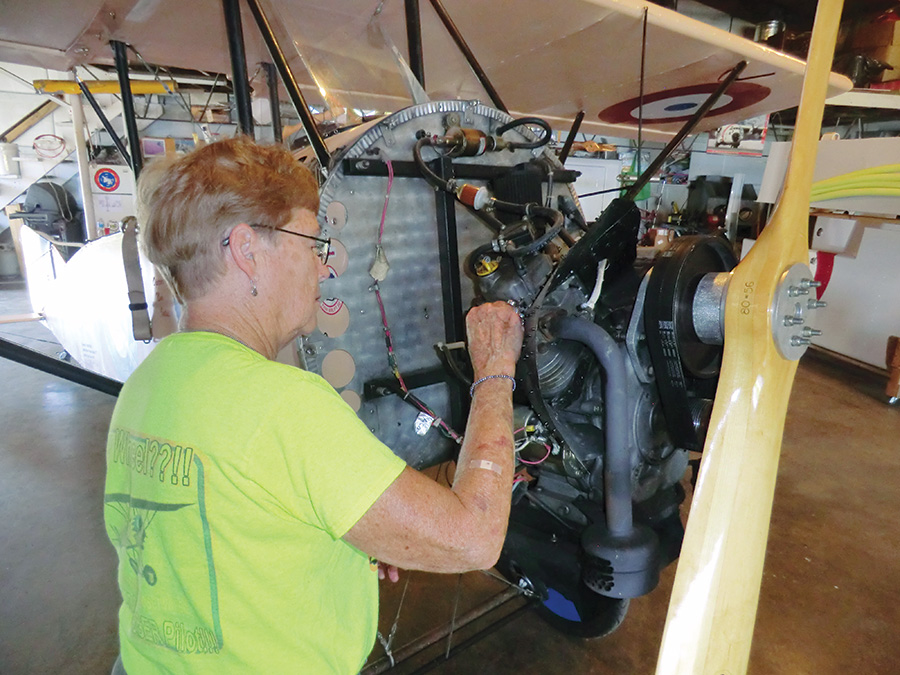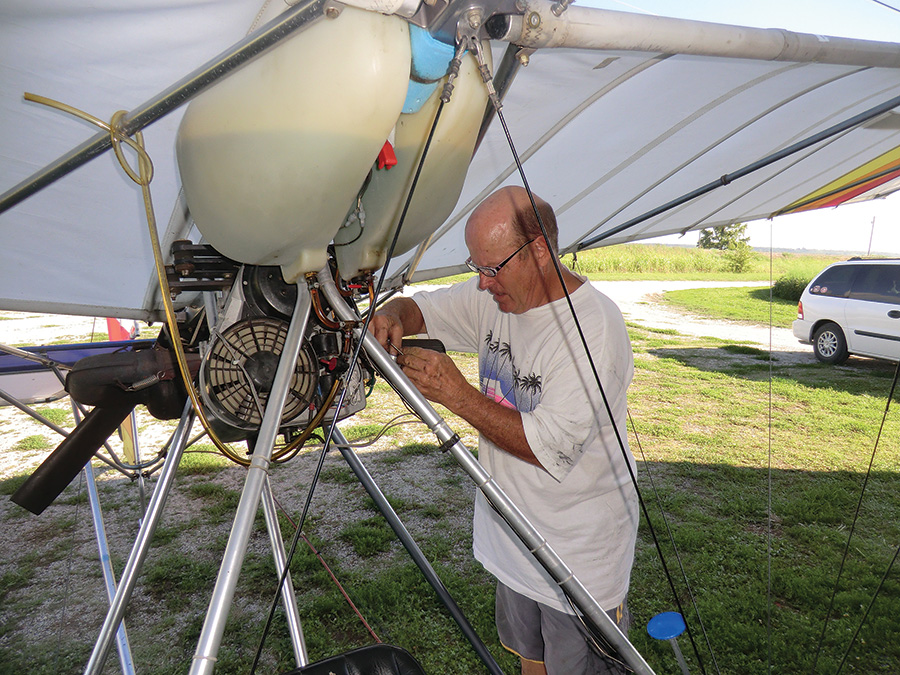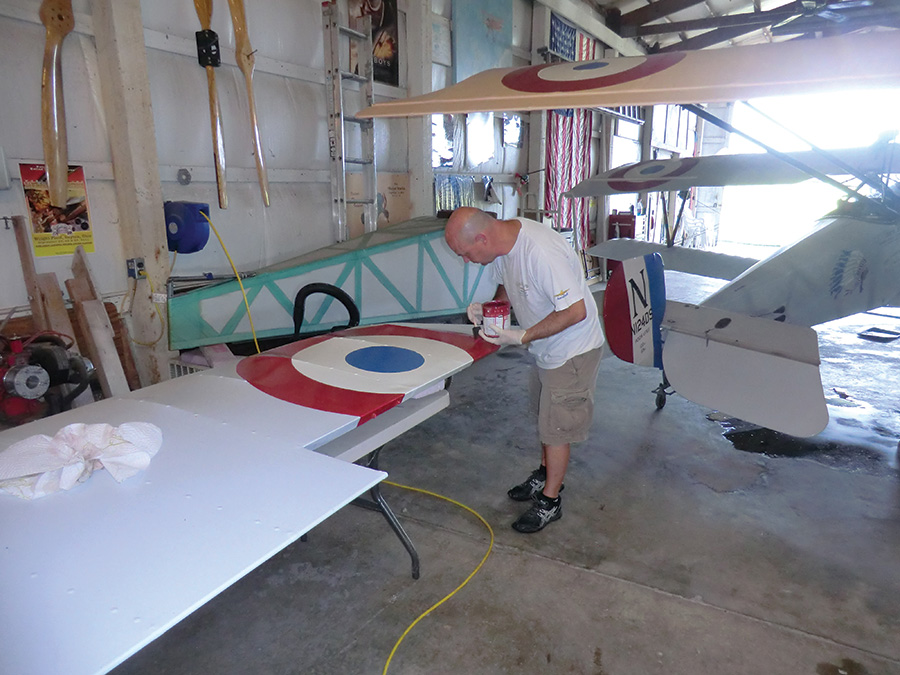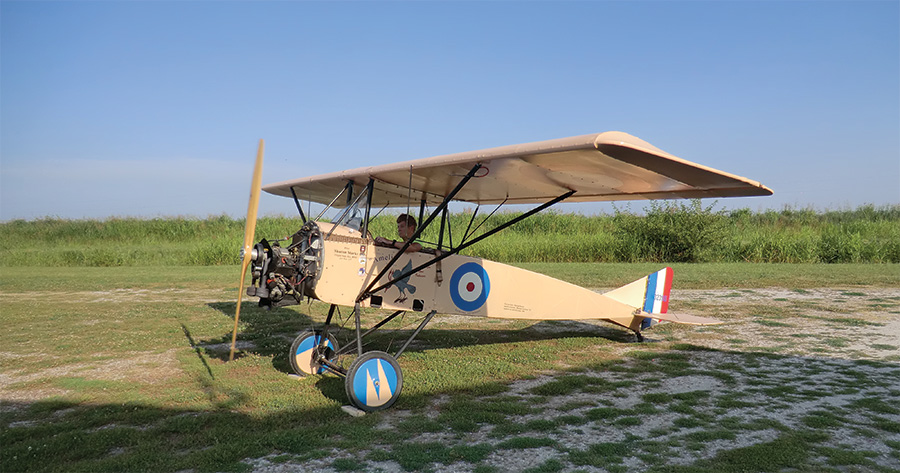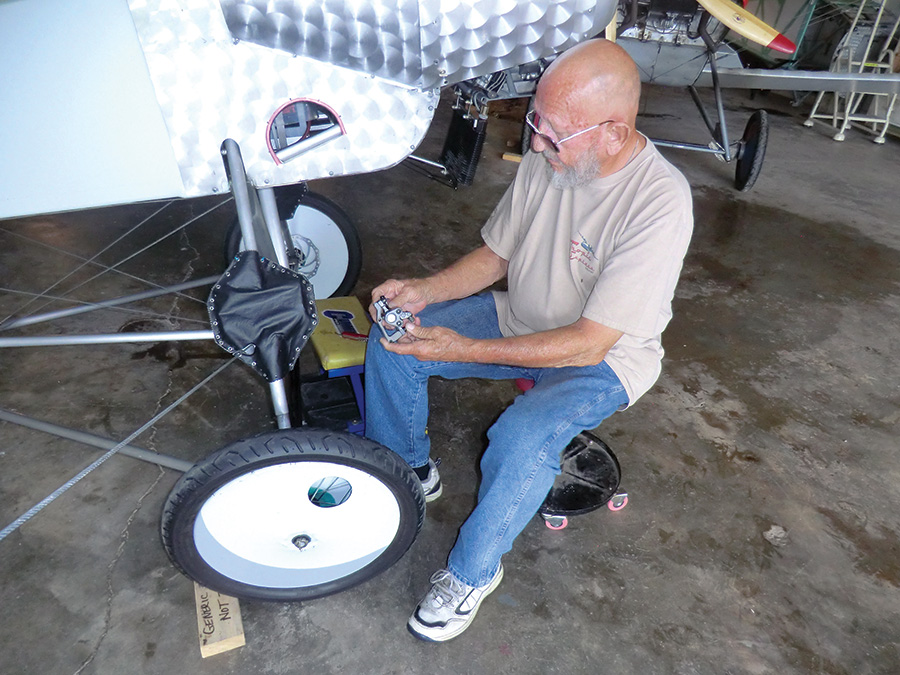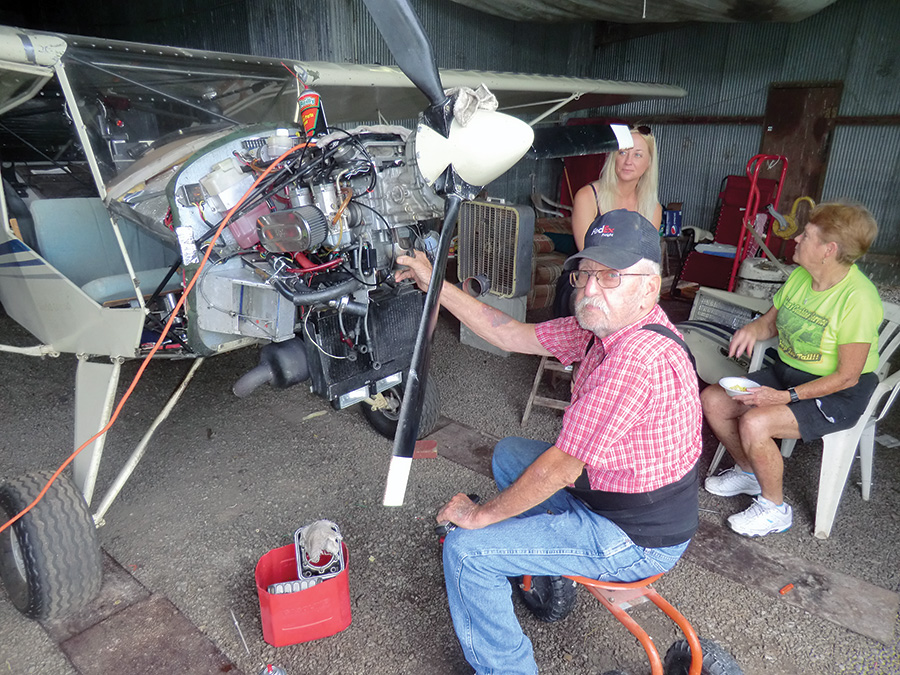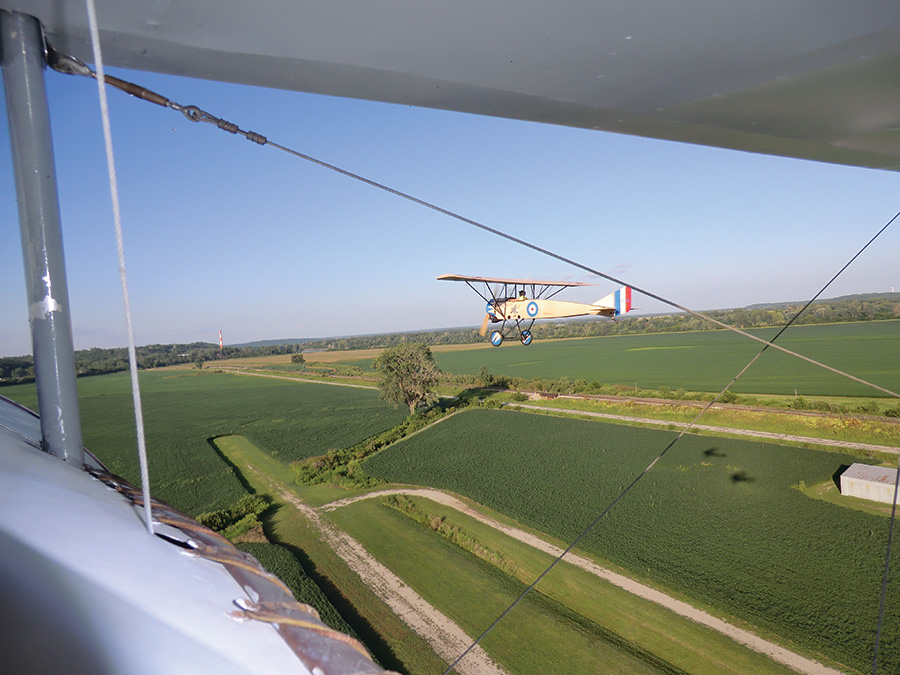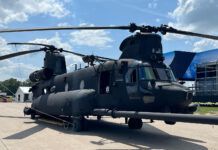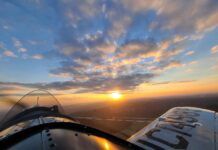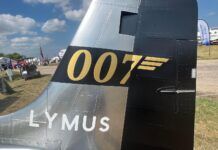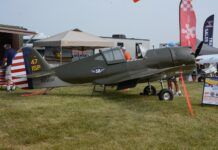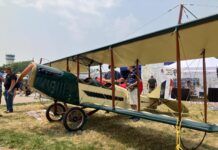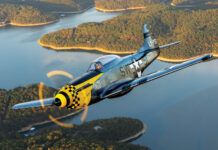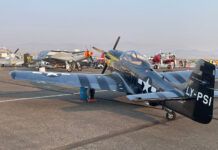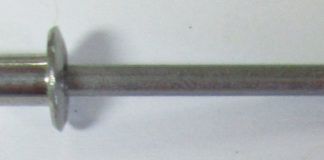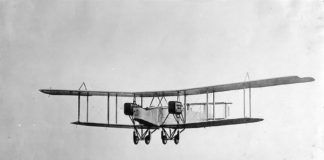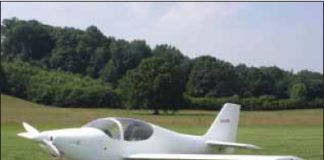It had started out as a typical July day at Liberty Landing International Airport. The normal Missouri mind-numbing, high-humidity summer heat had settled in. The airport had been deserted except for Big Bad Bob Loyd. He was semi-dozing, sacked out on the ratty old moth-eaten couch in his hangar, listening to the radio. Bob was taking a break from replacing the burned front piston on the Rotax 582 on his Avid Flyer “A” model.
Then a strange car pulled into the airport. The car drove around ’til the driver found Bob’s open hangar. The car stopped. A stranger got out and looked around. Then he went into Bob’s lair.
Now, we need to jump ahead about three hours. That’s when the rest of the usual mob of airport bums descended on the airport to find Bob in a jumping-up-and-down state of agitation. This set into motion a unique, never-happened-before, out-of-the-ordinary event that sent Liberty Landing International Airport into a state of turmoil. It wasn’t quite pandelirium, but it was dang close.
The excited airport bums surrounding Big Bad Bob were all shouting questions at him faster than he could answer them.
“Was he packin’ heat?” someone asked.
“Not that I could see.”
“Not even in a shoulder holster?”
“Nope, he wasn’t in a suit.”
“You’re kidding…He wasn’t in a black suit? ”
“Nope. He was just dressed like a normal guy. He was in slacks and a sport shirt.”
“Was he wearing mirrored sunglasses?”
“No.”
“Did he have an earpiece and was he talking to other people?”
“Nope.”
“Did he act mean and menacing?”
“Nope.”
“Well…how did you know he was who he said he was?”
“Well…he had this very impressive badge he showed me.” Bob replied, “It said U. S. Secret Service.”
Bob was getting frustrated at all the shouted questions.
“You mean he wasn’t wearing black, didn’t have shiny sunglasses, wasn’t carrying heat, didn’t have an earpiece radio, but he was an actual, real U.S. Government Secret Service Agent?
“Yep…that was it.”
Well…Hell! We was robbed! If a secret service agent was going to come to Liberty Landing International Airport and get us all in a dither, we wanted him to look the part. We wanted the whole nine yards. We wanted drama. We wanted intimidation! We wanted the proverbial man in black. We wanted a big guy with wide shoulders, narrow hips, and standing about six-four weighing in at a lean and mean 240. We wanted a black suit with a bulge over the left breast pocket. Where was the throat mic with earpiece? We wanted a stern no-nonsense face, firm chin and steely blue eyes hiding behind mirrored sunglasses.
Vernon Petre took over while Jerry went to his house to try and find a part. Vernon is a very good mechanic, too. But, the care and feeding of a Rotax is The Rotaxman’s specialty. We all defer to him concerning those frustrating beasts.
This was a rip-off. We wanted Jack Reacher!
The questioning continued. “Well, why was he here?”
Then Bob dropped the bomb. “He was here to give us a copy of the NOTAM (Notice To Airmen) about the upcoming visit of the president; he’s getting in here about 6:30 tomorrow and is leaving about 6:30 the next day. The bottom line is, from 6:30 tomorrow night till he leaves nothing can be in the air. No planes, choppers, drones, any kind of RC aircraft, balloons, model rockets, kites…nothing goes in the air.”
I asked, “And that was it? He didn’t do anything else?”
“Nope…he said, ‘Have a nice day,’ got in his car, and left.”
“Did you say anything to him concerning politics?” Now, this was a loaded question. Bob is a U.S. Army vet and his political viewpoints (like just about everyone at the airport) run about five miles to the right of Attila the Hun.
“Nope,” Bob said. “I bit my lips till they bled but kept my mouth shut.”
There was a big sigh of relief from all of us. We’d really miss Bob.
We all gathered around the big table in the back of the hangar and tried to make sense out of the NOTAM. We were looking for some kinda loophole, so we could get some flying in.
Dave Laur brushes the final coat of red on the right upper wing’s roundel of his Graham Lee Nieuport 16.
The NOTAM’s map was filled with different interlocking colored circles that covered the entire Kansas City area. There were different times noted for each circle when the president was going to be in different areas of the city. Unfortunately, our little airport was inside every one of those circles. Consensus: We weren’t going to do any flying for 24 hours starting at 6:30 p.m. the next day.
Well…poop! That dropped a big black cloud of gloom over everyone. The next day was forecast to be one of the best days for flying we’d had in over two months.
The typical Missouri summer had kicked in with stunning impact. We were experiencing days of mind-numbing heat, wet-wool-blanket humidity, and spar-bending, wire-twanging thermals during the day. This made flying our lightweight little WW-I replicas seem like you were driving your car over a freshly plowed field at 60 miles per hour. (‘Course, 60 mph is our actual groundspeed on a hot, high-humidity, zero-wind day.) Some days we’d actually get some limited air time in, just as the sun was going down. On those days, about sundown, the designated “bump dummy” was called on about every twenty minutes to take a trip around the patch to see if the bumps were dying down. It only took 15 minutes some days to go from bouncing-your-guts-out to silky smooth. Some days, the bumps never did go away. On those days we’d all put the birds away and go home to sulk.
Sharon’s Morane is ready for a “smoke test” where we start it up and check for any leaks, seepages, or problems before the final buttoning up.
Besides that, flying on a hot, high-humidity day is hard on planes, engines, and pilots. On some days, the higher we went, the hotter it got. The hotter it got, the bumpier it got. On those days, the realization that this is a hobby was really brought home. Finally deciding to give it up, quit, and go home is the best option you have. On those days, getting in the air-conditioned car for the sullen drive home was a blessed event.
The day the NOTAM was scheduled to go into effect, we were all out at the field flying at 3 p.m. We were trying to get in as much airtime as we could before the NOTAM’s hammer dropped. It was nice and cool with winds zero, gusting to two. So even this early in the afternoon, it wasn’t that bad. Scattered bumps aside, it was perfect WW-I flying weather.
Some bitterness became apparent as the shut-em-down time approached—the flying was just too great to quit! Vernon Petre flew in with his Quicksilver MX from his little 600-foot strip about two miles away to get in on some of the action, too. About 5:30 he got ready to fly back to his field, and his engine wouldn’t start. We were frantically taking turns yanking on his engine’s starter rope, trying to get that obstinate little so-and-so to run. Time was growing short! Many new words were tried out, but none of them convinced the recalcitrant little engine to start.
Six-fifteen rolled around, so we just made room in the hangar for Vern’s bird, pushed it in, and went home. Vernon’s wife Carol drove over and took him back home. We’d have all day tomorrow to fight with the engine and try to figure out its problem.
So, what did we do on a perfect flying day when we couldn’t fly? We still went to the airport to sniff around. There was hangar talk flowing like a turgid stream with the rest of the airport bums. After a while even this got boring, so some of us decided to do some past-due aircraft maintenance.
Sharon cleaned all the bird poo off her Airdrome Aeroplanes replica 1915 Morane-Saulnier’s wings, fuselage, and tail feathers. Then she washed it and did some touch-up painting.
While Mary Batson and Sharon watch, Big Bad Bob gets ready to replace the front piston on his Rotax 582.
Next, she was going to change the spark plugs on her Morane’s Big Bad Twin 48-hp engine. Pretty soon the usual semicircle of chairs occupied by an avid group of airport bums with nothing else to do was watching her while she toiled away. While she was toiling away doing all this, they offered scintillating educational commentary as she was talked through removing, cleaning, changing (if needed), gapping, applying anti-seize compound to the threads, and reinstalling the new spark plugs in the engine. I don’t think our commentary was helping much. I guess getting contradicting opinions from six different sources all at the same time on how to do what she was doing was getting on her nerves. Pretty soon her left eyelid started to twitch. Sharon’s fuse finally burned out. She yelled some rude new words at us. Most of us chose the safer, prudent route and went to do something else, far away from her glare. Only Fred Porter, the sweetest guy at the field, stayed to help her out. Freddie’s our big teddy bear, and no one’s ever going to be mean to Fred. He was safe entering the red-tinged force field shimmering around Sharon.
I adjusted the brake cables on her Morane and my replica Graham Lee Nieuport 11.
Dick Lemons installed disk brakes on his Airdrome Aeroplanes Fokker E-III. He also adjusted the belt tension on his Valley Engineering Series 3 PSRU on the Big Bad Twin engine he had in his Fokker E-III.
I changed the oil and installed new spark plugs in my Nieuport 11.
Mark Pierce was tracking down a small fuel leak in a fuel valve on his 1945 Piper L-4 Liaison.
Dave Laur was painting the roundels on his recovered Graham Lee Nieuport 16’s wing.
Other should-be-done stuff that had been put off because of the previous heat and humidity was done on some other planes.
Some guys with FAA repairman certificates did their Experimental aircraft’s annual airworthiness condition inspections, even if they weren’t due for a few months. Good cool July weather in Missouri isn’t to be wasted.
With the NOTAM cancelled, Sweetie and I make a pass down the runway at Liberty Landing International Airport after a successful bit of maintenance.
But the real drama was with the Rotax engine on Vernon’s Quicksilver MX. A specialist was required, and at Liberty Landing International Airport, we happen to have just the man we needed living on the field.
Yes-sirree-Bob, we’ve got “The Rotaxman,” Jerry Sharp. Jerry’s saved us on our Kolb Twinstar with its temperamental Rotax 503 many times. (The Kolb now has a Valley Engineering Big Bad Twin four-stroke muttering happily away, and it’s just what we needed.) Anyway, if Jerry can’t fix any ailing two-stroke engine, a Herculean heave off a bridge into the mighty Missouri River is in order. It’s only happened once in over 26 years of flying at LLIA. (See “The Two-Cycle Engine Toss,” KITPLANES, October 1997.)
And, the engine that got the heave-ho was one of Jerry’s engines. It had failed on him at least eight times with no warning and displayed no symptoms when it was back on the ground. Now, Jerry’s got a fuse about 1/16-inch long, impregnated with fulminate of mercury. When it finally burns out, the results are instantaneous, educational, and unbelievably entertaining. Since the word has been spread worldwide about Jerry’s unbroken Olympic record in the two-cycle engine toss, other frustrated two-stroke flyers have found their way to the airport just to stop by and shake Jerry’s hand.
The NOTAM lasted for the full 24 hours. That was a good thing ’cause that’s how long it took to fix Vernon’s engine. Jerry, using some words none of us had ever heard before, finally got Vern’s engine transformed from a sullen lump of inert metal into a screaming fire-breathing beast. It was starting on the first pull, running about 800 rpm more than usual, and Vernon was one happy camper. The Rotaxman had triumphed again. As usual with most two-stroke engine issues, there were multiple problems with the engine. In Vernon’s case there were four different things wrong at the same time. Fixing one problem did not mean the engine was finally going to run. It just took a whole day to track down all the engine’s ills and get them dialed in.
The president finally left town in Air Force One. When he was out of the NOTAM’s airspace and it was cancelled, we hit the sky. The good flying weather continued for the rest of the week. We got a lot of flying in.
One last note, Tom Glaeser, our resident pusher of the envelope, wanted to get out on the runway during the NOTAM and just run up and down with just one wheel off the ground. He’s got the name on his plane, “le rebelle sans ide,” for a reason. (It loosely translates to “The Rebel Without A Clue.”)
We talked him out of it finally when we told him about the lookdown capability of the radar in the circling unseen F-16s lurking high up there in the sky, and the well-armed Apache helicopters probably hiding just over the horizon.
Thankfully, that adventure didn’t happen.
Because it looked like we would probably be in for another brutal Missouri winter, we got in as much flying as possible ’til the first snow flew. And then we hunkered down to see what winter would bring.
The adventure continues…

